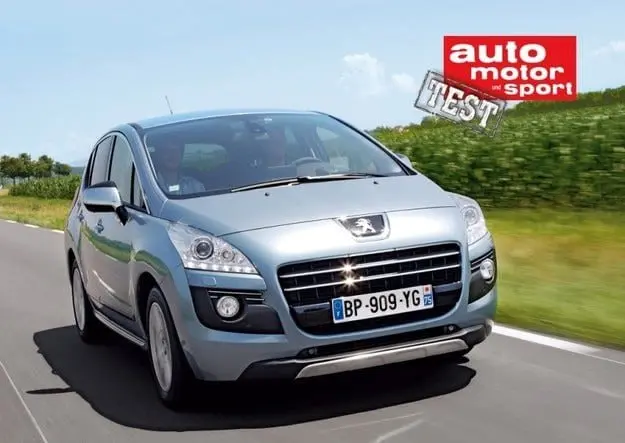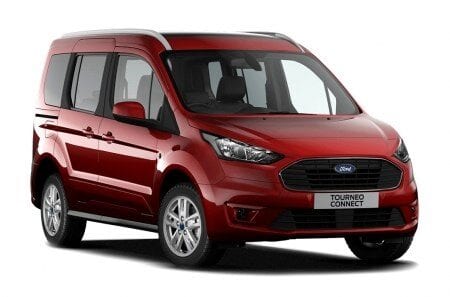
Test drive Peugeot 3008 Hybrid4: Separate feeding
Content

Peugeot has begun series production of the long-awaited world's first diesel hybrid. Introducing this unique piece of equipment developed in collaboration with Bosch.
Our first contact was in August 2009, when auto motor und sport had the opportunity to get to know this interesting concept model live. However, the technology developed by Peugeot and Bosch combined a diesel engine and a hybrid system, made it possible for purely electric propulsion, and its architecture allowed for a dual powertrain. Two years ago, the designers promised a fuel consumption of 4,1 liters for the NEFZ, but in terms of the consistency of the individual drive elements, there was still much to be desired.
During this period, the designers put in a lot of effort to harmonize their work, with the result that the 3008 Hybrid4 is now a fact of the market. Price lists are ready, the start of production is a fact, by the end of 2011 800 units will be delivered to dealers.
First touch
The overall concept has not changed, but the designers have managed to further reduce consumption - now it is 3,8 liters per 100 km, which corresponds to 99 g / km of carbon dioxide. The famous two-liter diesel engine with 163 hp. sends its power to the front axle via a six-speed automated transmission, while the rear wheels are driven directly between them by a 27 kW (37 hp) electric motor. The electric motor is powered by a Sanyo NiMH battery with a capacity of 1,1 kilowatt-hours. As a result of the chosen technical solution, the car can implement not only a hybrid drive with a system power of 200 hp, but also a dual transmission without a mechanical connection between the front and rear axles.
Before we start, we must decide which of the four operating modes (Auto, Sport, ZEV or 4WD) to place the rotary knob behind the gear lever. To begin with, our choice falls on automatic mode, in which the car independently decides how to balance the various energy sources and distribute the work of the drive units. Obviously, this synchronicity required a lot of work on the part of the designers, since this system of a hybrid type with split axle is the first in the world of its kind.
Do you want your 3008 to be rear wheel drive? No problem - however, you will have to press the accelerator pedal carefully. So you can not count on the traction of the motor, which will take you to the next traffic light. The diesel engine remains a silent spectator of events and only turns on if you want more active acceleration or more speed. At the same time, passengers must listen very carefully to capture its exquisite appearance as an active participant in the drive.
Part of the past
Thanks to the integrated hybrid concept, there are a few unfinished transmissions in the past. A short pause from interrupting traction when switching from one gear to another is compensated by a short pulse from the electric motor. The bliss is not all-encompassing, however, and if you still want to remember how disharmonious an automatic manual transmission itself can be, you won't have much of a problem. All you have to do is switch to Sport mode, which electronically activates two transmissions at the same time, and although acceleration from zero to 100 km / h takes only 8,5 seconds at full traction, the shift becomes noticeably rough.
Electric mode (ZEV) provides a much smoother ride. At speeds up to about 70 km / h, a 1,8-ton car can realistically travel about four kilometers, relying entirely on the battery. The diesel turns on, as in automatic mode - if you want to accelerate faster or when the battery level drops below a certain minimum. In 4WD mode, both drives work even if the battery level drops below this minimum. To do this, an eight-kilowatt generator is activated, driven by an internal combustion engine and serving as the main core in its start-stop system, providing the necessary electricity.
Price positioning
The new model in Hybrid4 99g version will cost €34 in Germany, which means it is about €150 more expensive than its front-wheel-drive-only counterpart. The second proposed version – with a higher level of furniture, bigger wheels, a navigation system and a head-up display – will cost 3900 euros and, of course, will not have the number 36 in the name. However, the consumption is four liters per 150 kilometers and carbon dioxide emissions are 99 g / km is slightly higher than the base model.
If you're interested in other similar models, you'll need to keep an eye on PSA, because the same systems will - to begin with - be integrated into the Peugeot 508 RXH and Citroen DS5. To this end, the developers at PSA and Bosch have worked long and hard to create integrated modules (such as the entire rear axle) that can be implanted in different platforms and adapted to different engines. However, they say that fast work is a disgrace to the master.
text: Boyan Boshnakov
technical details
| Peugeot 3008 Hybrid4 | |
|---|---|
| Working volume | - |
| Power | 200 k.s. |
| Maximum torque | - |
| Acceleration 0-100 km / h | 8,5 with |
| Braking distances at a speed of 100 km / h | - |
| full speed | 191 km / h |
| Average consumption fuel in the test | 3,8 l |
| Base Price | 34 150 EUR in Germany |

